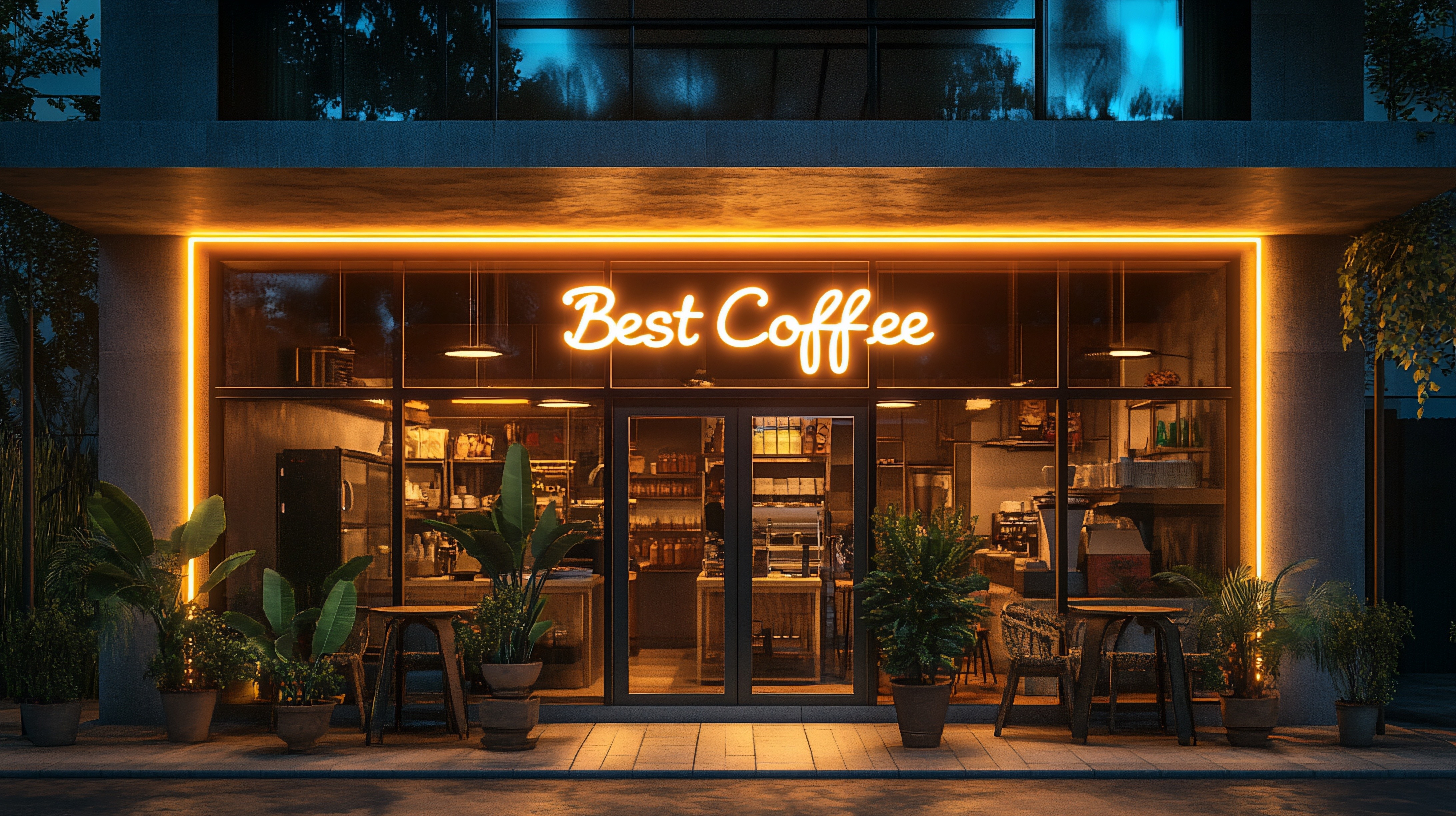Restaurant Email Marketing: Why It Works + The Campaigns You Need
Email marketing is a hugely effective strategy for restaurant owners and operators to engage with their audiences and increase sales…
But not every restaurateur understands how effective it is (or where to start).
Until now, that is.
In this blog, we’ll take you through:
- Whether restaurant email marketing works or not
- Five essential email campaigns your restaurant should send
- Examples of each essential email campaign (and why they work)
(Plus, we’ve compiled a list of winning subject lines and preview texts for those five campaigns that you can download for free at the end!)
So, let’s start by answering the simplest question of the bunch:
Does Restaurant Email Marketing Actually Work?
(Spoiler alert: it does.)
Email marketing is one of the most cost-effective, impactful marketing channels for businesses of all kinds — restaurants included.
When considering email marketing as a strategy for any business, research has found:
- 63% of consumers say email is their preferred way to hear from brands and businesses
- Email marketing generates an average return on investment (ROI) of $36 for every dollar spent
- 44% of respondents (in a Statista survey) said email marketing has influenced them to make a purchase
Email marketing has shown to be just as effective for restaurants as it is for other kinds of businesses, too.
- Email is the preferred method by restaurant consumers to hear about restaurant promotions and deals
- 46% of consumers said they’d like to get emails from their favorite restaurants weekly, and 44% said the same for monthly
- Restaurant industry emails are opened ~40% of the time, a higher open rate than retail and eCommerce (~35% and ~29%, respectively)
So, does restaurant email marketing work? It absolutely does.
Especially when your restaurant implements these five essential email marketing campaigns.
5 Essential Restaurant Email Marketing Campaigns (And Why They Work)
1 — Welcome Email Marketing Campaigns
A welcome email is exactly what it sounds like: an email welcoming a new subscriber to your restaurant’s mailing list and wider community.
Welcome emails are the first emails new subscribers get after signing up for your restaurant’s mailing list, which is why they’re used to introduce yourself and your restaurant. They’re also a good chance to set expectations with your subscribers, like what to expect from your emails and how often you’ll send them.
Example: McDonald’s — Welcome Email

Why it works
✔ It has a friendly, grateful tone — Before saying anything else, McDonald’s shows gratitude and friendliness by thanking subscribers for signing up to their list and alluding that “something great” is on the horizon
✔ It offers more ways to connect — McDonald’s offers subscribers easy ways to connect with them on other platforms, whether that’s through their media accounts or their mobile app (all of which are easily linked)
✔ It sets clear expectations — McDonald’s explicitly states their emails will include the “inside scoop” on events, promotions, and product development, so subscribers know exactly what to expect in their inboxes
Find the best subject lines for your restaurant’s welcome email with The Ultimate Email Subject Line Playbook for Restaurants.
2 — Product Launch Email Marketing Campaigns
A product launch email is an email that tells your subscribers your restaurant has just released (or is going to release) a new product or offer — like a new menu item or merch.
The main purpose of product launch emails is to build anticipation and excitement. If your product hasn’t launched yet, you might send a teaser email with a countdown. Or, if the product is already out, you might send an email hyping up the product and encouraging purchases.
Example: Starbucks — Chocolate Coconut Cold Brew Launch

Why it works
✔ It focuses on benefits — Starbucks’ product launch focuses entirely on the benefits of their new cold brew, selling subscribers on the “ease, taste, and convenience” of the cold bew (vs. the product itself)
✔ It creates an experience — The middle block in Starbucks’ product launch email offers to teach subscribers how to make cold brew at home, turning a single product into an entire at-home experience
✔ It’s simple and to the point — Instead of crowding the product launch email with fluff or excessive graphics, Starbucks keeps it simple and to the point; the focus is entirely on the new cold brew
3 — Discount Email Marketing Campaigns
A discount email is an email that lets your subscribers know about a specific deal, discount, or offer your restaurant has or will have soon.
Discount emails are often time-based, designed to create a sense of urgency that encourages sales — and encourages them now. However, discount emails need to balance that sales angle by answering the “why” for your subscribers, clearly explaining what you’re offering, why they should care, and what to do next.
Example: Chipotle — Free Fountain Drink

Why it works
✔ It’s visually appealing — Chipotle puts the offer front and center, both with the XL photo of the free fountain drinks in question and the copy clearly stating the offer (and emphasizing that it’s “FREE”)
✔ It’s a reasonably-timed offer — With a 10-day offer expiry, Chipotle found the sweet spot between fostering a sense of urgency and being realistic with how fast people are willing to rush to their restaurant
✔ It clearly shows what’s next — Chipotle has three call-to-action buttons through their email that all say “ORDER NOW,” making the subscriber's next steps incredibly clear and easy for them to complete
Cross “winning subject lines” off your to-do list with The Ultimate Email Subject Line Playbook for Restaurants.
4 — Win-back Email Marketing Campaigns
A win-back email is an email designed to re-engage subscribers who interacted with your restaurant’s email marketing in the past but haven’t in a long while.
And, while all win-back emails are intended to pique the interest of long-lost subscribers, there are almost endless ways to do that. A few popular win-back strategies you may have seen before include:
- Offering a limited-time discount
- Asking for feedback/ways to improve
- Recommendations for a specific product
Example: Taco Bell – Double Decker® Taco

Why it works
✔ It’s prompting a specific action — Taco Bell’s win-back email focuses specifically on the Double Decker taco, inviting subscribers to re-engage for a specific reason; it’s not just a general call to “come back”
✔ It uses multiple win-back features — The specificity of Taco Bell’s win-back campaign is the #1 strategy at play, but they also sprinkle in some social proof (“fan favorite”) and exclusivity (“thru 10.30”)
✔ It’s clean and straightforward — Taco Bell doesn’t use a ton of showmanship in this email, but it doesn’t need to; it’s clear what the subscriber is supposed to be looking at and what they should do next
5 — Email Newsletters
An email newsletter is an email that updates subscribers on your restaurant’s latest and greatest, whether that’s sharing an event recap, offering a sneak peek at a new menu item, or inviting them to your new location’s soft opening.
Sending a consistent, high-quality restaurant newsletter is a great way to build an exclusive sense of community with your subscribers, creating an “inner circle” of people who get your restaurant’s news before everyone else.
Example: Claud – Email Newsletter

Why it works
✔ It sticks to one topic — Claud’s newsletter sticks to a single, time-specific theme, ensuring that each piece of content in the newsletter is relevant to the subscriber at the time they’re receiving it
✔ It’s skimmable but engaging — Claud uses headings, short text, and bolded details, keeping their newsletter “skimmable” enough for subscribers on the go but engaging enough for reading in full
✔ It’s got a purpose — Everything in Claud’s newsletter has a purpose for being there; from the teaser for New Year’s Eve tickets to the update on their holiday hours, everything is genuinely useful
Craver’s FREE Ultimate Email Subject Line Playbook for Restaurants
As your restaurant works through this list of email campaigns, make sure you don’t neglect the subject lines and preview texts!
Engaging, informative subject lines and preview texts can be the difference between a subscriber opening and engaging with your restaurant’s emails and them pressing the little trash can icon without hesitation.
Luckily, Craver has compiled a free, downloadable list of winning subject lines and preview texts for each of the essential restaurant email marketing campaigns we outlined in this blog…
And it can be yours in just a few clicks.

.png?width=86&name=Untitled%20design%20(84).png)





